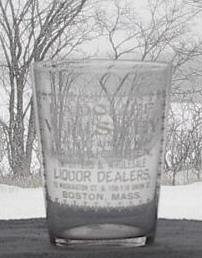
Figure 12
| Finally, here's yet another Boston glass but this time photographed against a natural landscape [Figure 12]. Sadly, the snow lay deep and crisp and even on the day of the photograph and we end up with another example of white on white. There actually IS a reason that Russian troops are kitted out with white smocks for winter combat: white-on-white makes for perfect camouflage! |
 Figure 12 |
The lesson here is that if we wish to make the label on a pre-pro glass stand out clearly, we need to choose as background that is as dark as possible.
This Old Landscape
Would-be sellers on eBay are frequently driven outdoors in search of adequate lighting,
typically balancing the shot precariously on a convenient fencepost or railing.
Since little thought is given to the background, we're treated to a dizzying
array of texture, color and highlights. As a keen gardener, this can be an endless source
of fascination, but it can also be a major distraction if the focus of hunt is
pre-prohibition glass rather than a rare perennial Geranium. An example is shown
in Figure 13. In the color version it's difficult to be sure if the
intended subject is a bed of daffodils or the bloom etched on the Cassel
Eye-Opener. The
season changes for the example in Figure 14, but again, General Wayne
is having difficulty distinguishing himself from the backdrop of trees, lawn and
siding. We move indoors for Figure 15 and now the main focus is
the neighbor's house, while in Figure 16, the seller's hand dominates the
image. While hand-holding requires minimal set-up, flesh tones
provide a decidedly sub-optimal background plus there is the issue of
movement-induced blur consider. On occasion the distraction of
fingernails deeply impacted with what might well be recent privvy nightsoil is
so disturbing that clicking on to the next listing is a welcome escape!
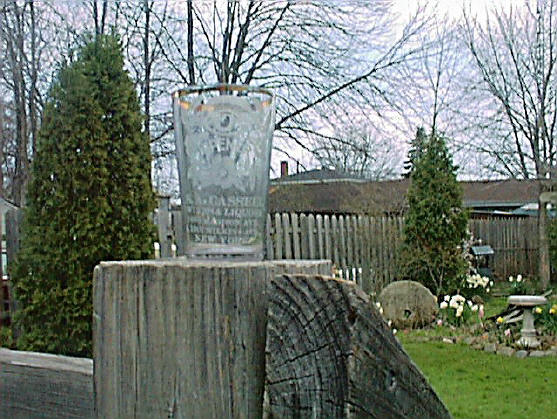 Figure 13 |
||
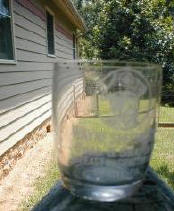 Figure 14 |
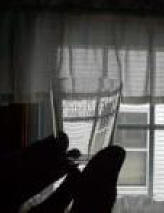 Figure 15 |
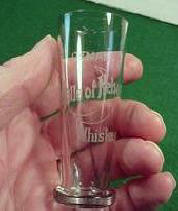 Figure 16 |
While most of the images shown above could have benefited greatly from tight cropping to remove peripheral distracting elements, the take-home is that if we wish to focus a viewer's attention on the glass, we need to provide a clean background.
Time for reflection
The other main barrier to capturing clean images of subjects made of glass is the
issue of
reflections. Curved vessels such as shots are particularly difficult in that they
concentrate and focus light into vertical bands and they usually end up positioned so as to obliterate a crucial part of the label. The stronger and more
directional the source, the more obvious the problem becomes, as seen when one
tries to use a flash [Figure 17].
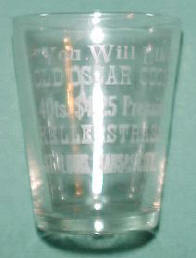 Figure 17 |
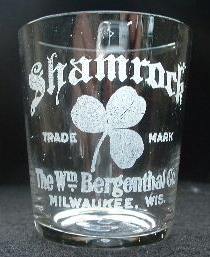 Figure 18 |
Reflections can originate from either the back, the front, or both walls of the glass, depending on camera position. The photographer who created the image in Figure 18 was doing everything right in terms of a clean backdrop that nicely contrasts the label, but he was standing in full sun and so we see a pair of hands holding a camera reflected hotly from the front of the glass above the word "Shamrock". The take-home here is that one has to examine everything in immediate vicinity of the glass and evaluate it for its ability to show up as reflected hot spot in the final photograph.
[ Turn Back a Page ] [ Back to Random Shots Index ] [ Turn to Next Page ]